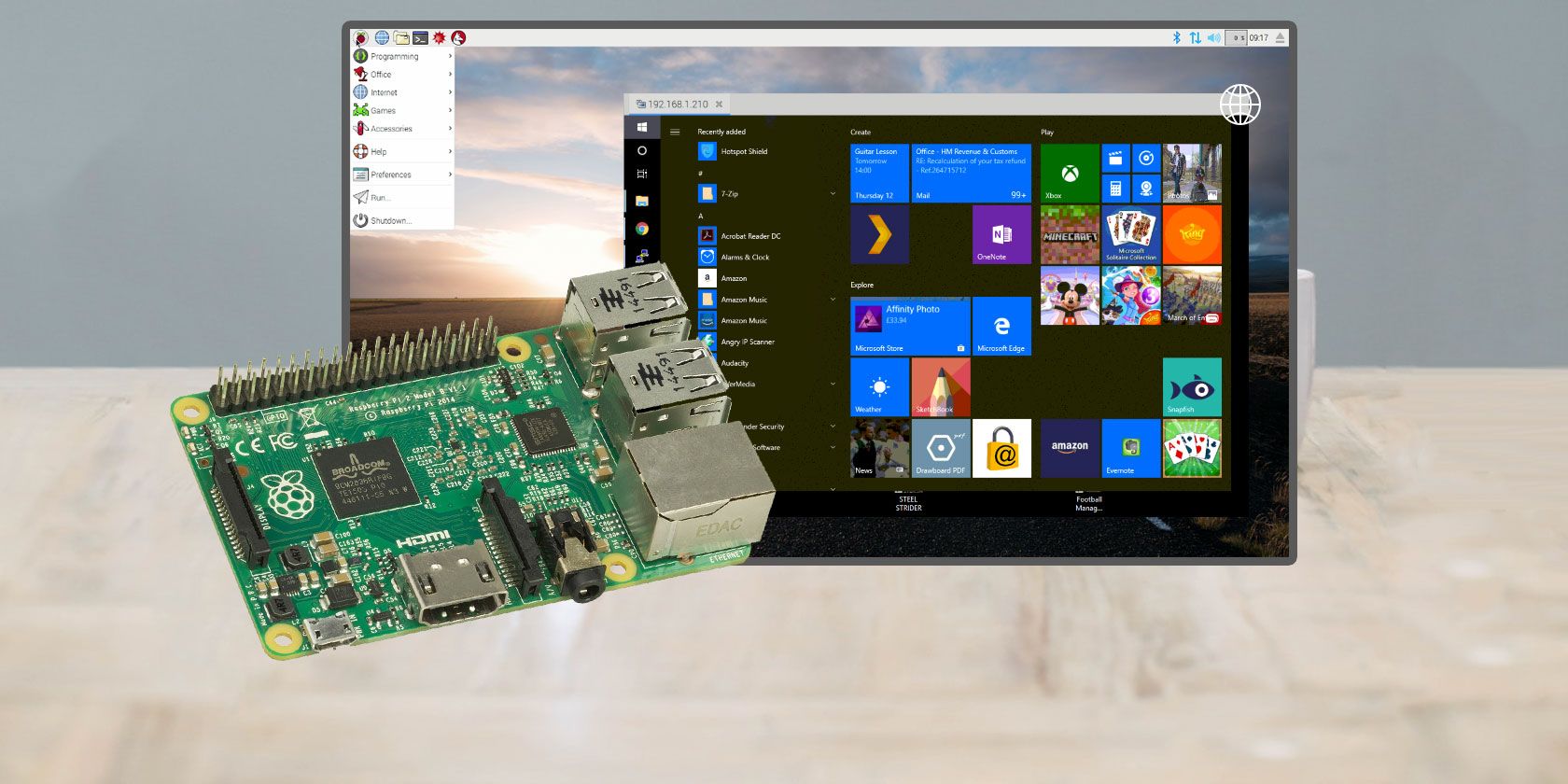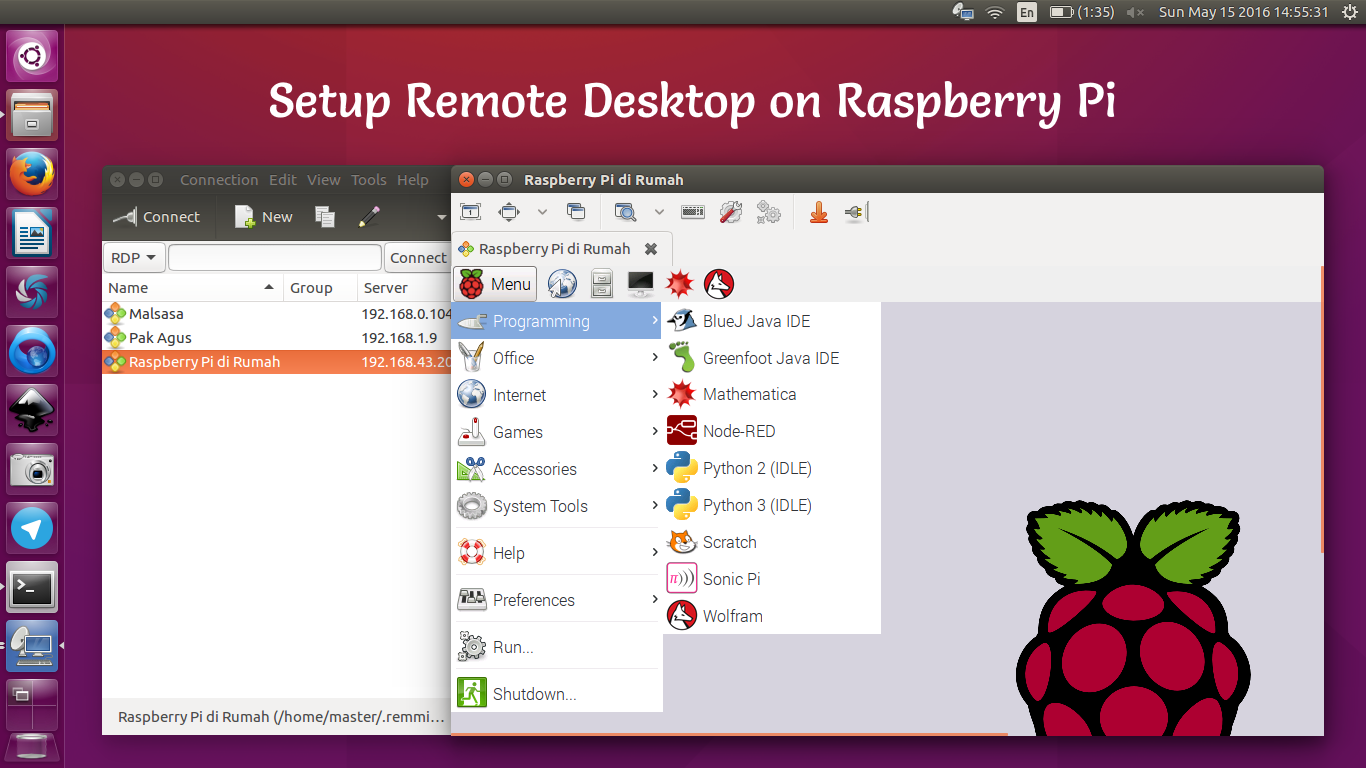Connecting to your Raspberry Pi remotely while behind a firewall can sound like a tech challenge, but don’t panic! Whether you’re a hobbyist or a professional, this guide will walk you through every step to achieve seamless remote access without breaking the bank. No Windows software required—just pure freedom and flexibility.
Imagine being able to control your Raspberry Pi from anywhere in the world, no matter how many firewalls stand in your way. Sounds cool, right? But how do you make it happen without spending a dime on expensive tools or relying on Windows? Well, buckle up because we’re about to dive deep into the world of remote connections, firewalls, and all the juicy tech tricks you need to know.
This article isn’t just another tech tutorial; it’s your go-to resource packed with practical tips, expert advice, and real-world examples. By the end of this read, you’ll not only understand how to connect your Raspberry Pi remotely but also gain confidence in navigating complex networking setups. Let’s get started!
- Jamelizz Erome The Rising Star Taking The World By Storm
- Who Are These Arab Guys Anyway Exploring The World Of Ethfrac12ethmicroethordmethdegntildesbquoethcedil Ethdegntildeeuroethdegethplusmnethdegntildedaggerethcedil Ethordmntildesbquoethfrac34 Ntilde141ntildesbquoethfrac34
Table of Contents
- Introduction to Remote Raspberry Pi Connections
- Understanding the Basics of Firewalls and Remote Access
- Methods for Remote Connection Without Windows
- Using SSH for Secure Connections
- Free Tools to Simplify the Process
- Step-by-Step Setup Guide
- Common Issues and How to Fix Them
- Enhancing Security for Your Raspberry Pi
- Alternative Solutions You Should Know
- Wrapping It All Up
Introduction to Remote Raspberry Pi Connections
So, why would anyone want to connect their Raspberry Pi remotely? Think about it: you’re out of town, but you need to check on that home automation project you’ve been working on. Or maybe you’re collaborating with a team and need instant access to your Pi for debugging. Remote connectivity opens up endless possibilities, making your projects more flexible and efficient.
But here’s the catch—firewalls. They’re like bouncers at a club, deciding who gets in and who doesn’t. If your Raspberry Pi is sitting behind one, getting access from outside can feel like trying to sneak into an exclusive party. Luckily, there are ways around it, and we’re here to show you how.
And the best part? You don’t need Windows or any paid software to pull it off. With the right tools and techniques, you can connect to your Pi securely and freely. Let’s break it down.
- Gracie Bon Erocircme The Rising Star Taking The World By Storm
- 5movierulz The Ultimate Destination For Movie Enthusiasts
Understanding the Basics of Firewalls and Remote Access
Before we jump into the nitty-gritty, let’s talk about what firewalls actually are and why they matter when it comes to remote connections. Simply put, a firewall is a security system that monitors and controls incoming and outgoing network traffic based on predetermined security rules. It’s like a digital gatekeeper, protecting your network from unauthorized access.
When you try to connect to your Raspberry Pi remotely, your firewall might block the connection because it doesn’t recognize the incoming traffic as safe. That’s where things get tricky, but fear not! There are ways to configure your firewall to allow remote access without compromising security.
Why Is Remote Access Important?
Remote access isn’t just a convenience—it’s essential for many projects. Whether you’re running a server, managing IoT devices, or simply tinkering with code, having the ability to connect to your Pi from anywhere gives you unparalleled control and flexibility.
Methods for Remote Connection Without Windows
Now that you understand the basics, let’s explore some methods for connecting to your Raspberry Pi remotely without using Windows. There are several approaches you can take, each with its own pros and cons. Here’s a quick rundown:
- SSH (Secure Shell): One of the most popular and secure methods for remote access. We’ll dive deeper into this later.
- Port Forwarding: Configuring your router to forward specific ports to your Raspberry Pi. This method requires some technical knowledge but is highly effective.
- Third-Party Services: Tools like ngrok or PageKite can simplify the process by providing temporary URLs for remote access.
Each method has its own set of steps and considerations, so choose the one that best fits your needs and skill level.
Using SSH for Secure Connections
SSH, or Secure Shell, is the gold standard for remote access. It provides a secure, encrypted connection between your device and your Raspberry Pi. Here’s how you can set it up:
Enabling SSH on Your Raspberry Pi
First, you’ll need to enable SSH on your Pi. This can usually be done through the Raspberry Pi Configuration tool or by placing a file named "ssh" (without any extension) in the boot partition.
Connecting via SSH
Once SSH is enabled, you can connect to your Pi using a terminal or an SSH client. Here’s a basic command you can use:
ssh pi@your-raspberry-pi-ip
Replace "your-raspberry-pi-ip" with the actual IP address of your Pi. If you’re behind a firewall, you’ll need to configure port forwarding or use a third-party service to access it from outside your network.
Free Tools to Simplify the Process
While SSH is powerful, sometimes you need a little extra help. Here are some free tools that can make remote access easier:
- ngrok: A popular tool for exposing local servers to the internet. It creates a secure tunnel and provides a temporary URL for remote access.
- PageKite: Another great option for creating public URLs for local services. It’s easy to set up and works seamlessly with Raspberry Pi.
- autossh: A utility that automatically restarts SSH sessions if they drop, ensuring you always have a stable connection.
These tools can save you a lot of time and hassle, especially if you’re dealing with dynamic IP addresses or complex firewall configurations.
Step-by-Step Setup Guide
Now that you’ve got the theory down, let’s walk through a step-by-step setup process. This guide assumes you’re using a Linux or macOS machine to connect to your Raspberry Pi.
Step 1: Enable SSH on Your Raspberry Pi
As mentioned earlier, enable SSH on your Pi using the configuration tool or by placing an "ssh" file in the boot partition.
Step 2: Configure Port Forwarding
Log in to your router’s admin panel and set up port forwarding. Forward port 22 (the default SSH port) to the local IP address of your Raspberry Pi.
Step 3: Connect via SSH
Open a terminal and use the SSH command to connect to your Pi. If you’re outside your local network, use the external IP address of your router instead of the local IP.
Step 4: Test Your Connection
Once connected, try running a few commands to ensure everything is working as expected. If you encounter any issues, check your firewall settings and port forwarding configuration.
Common Issues and How to Fix Them
Even with the best-laid plans, things can go wrong. Here are some common issues you might encounter and how to fix them:
- Connection Refused: Double-check your IP address and ensure SSH is enabled on your Pi. Also, verify that port forwarding is correctly configured.
- Timeout Errors: If your connection times out, it could be due to a firewall blocking the traffic. Try whitelisting the SSH port in your firewall settings.
- Authentication Failed: Make sure you’re using the correct username and password. If you’ve set up SSH keys, ensure they’re properly configured.
If none of these solutions work, consider reaching out to your router’s support team or consulting online forums for additional help.
Enhancing Security for Your Raspberry Pi
Security should always be a top priority when setting up remote access. Here are a few tips to keep your Raspberry Pi safe:
- Change the Default SSH Port: This makes it harder for attackers to find your SSH service.
- Use SSH Keys Instead of Passwords: SSH keys provide stronger authentication and reduce the risk of brute-force attacks.
- Disable Root Login: Prevent unauthorized access by disabling root login over SSH.
Implementing these measures will significantly improve the security of your remote connection.
Alternative Solutions You Should Know
If SSH and port forwarding aren’t your thing, there are other ways to connect to your Raspberry Pi remotely:
VNC (Virtual Network Computing)
VNC allows you to access your Pi’s graphical interface from another device. It’s great for projects that require a GUI, but it can be slower than SSH.
Web-Based Interfaces
Some projects come with built-in web interfaces that you can access remotely. This is a convenient option if you prefer working through a browser.
Wrapping It All Up
Connecting to your Raspberry Pi remotely behind a firewall without Windows doesn’t have to be a headache. With the right tools and techniques, you can achieve seamless access and take your projects to the next level. Remember to prioritize security and always test your connections thoroughly.
We hope this guide has been helpful in demystifying the process of remote Raspberry Pi connections. If you have any questions or tips of your own, feel free to drop them in the comments below. And don’t forget to share this article with your fellow tech enthusiasts!
Stay tuned for more awesome content and happy tinkering!
- Arlene Litman The Remarkable Story Of A True Icon In The Entertainment World
- Elizabeth Carlisle Kidnapping The Untold Story You Need To Know


